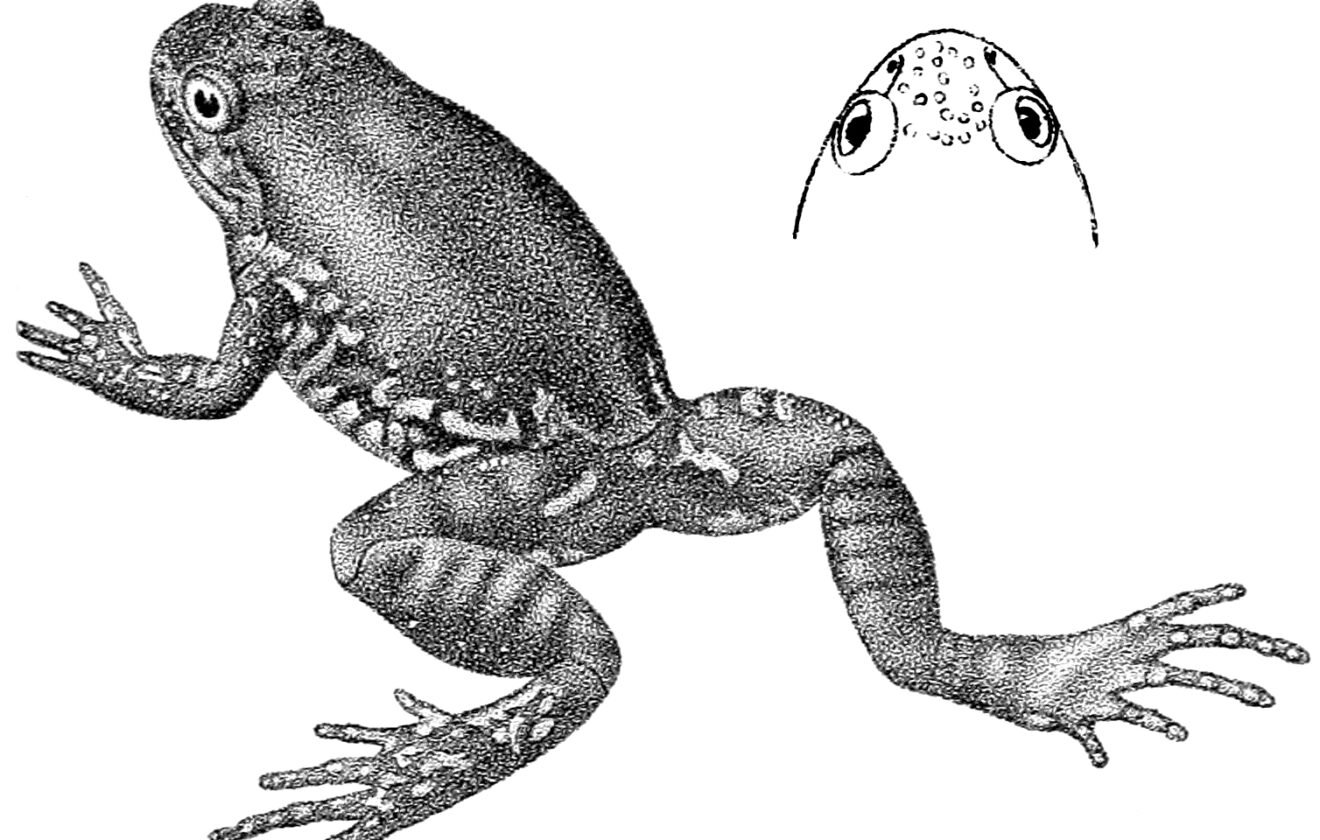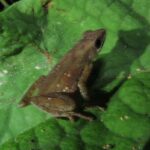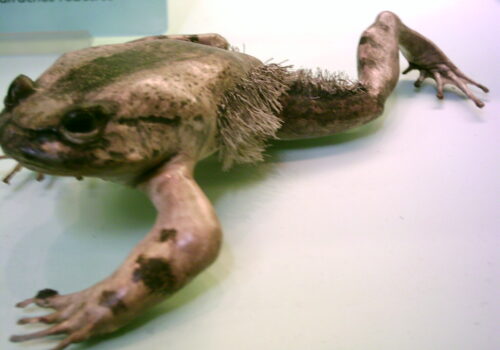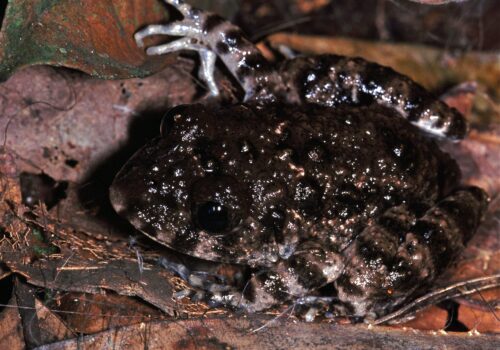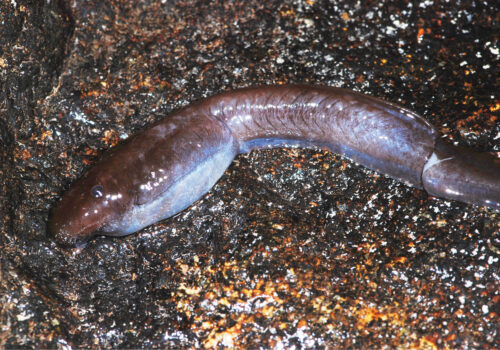- Exploring the Hidden Lives of Leptodactylodon ovatus: Central Africa's Secretive Stream-Dwelling Frog
- Taxonomy and Classification: Understanding the Species' Roots
- Natural Habitat: A Life Hidden Among Small Streams and Misty Highlands
- Physical Features: A Perfect Fit for Life Along the Forest Floor
- Behavior and Life Cycle: Silent Hunters in the Twilight World
- Ecological Role: A Vital Part of the Rainforest Microcosm
- Conservation Status and Ongoing Threats: A Battle for Survival
- Cultural Significance and Scientific Importance
- Conclusion: Guardians of a Precious World
Exploring the Hidden Lives of Leptodactylodon ovatus: Central Africa’s Secretive Stream-Dwelling Frog#
Amid the dense, dripping greenery of Central Africa’s tropical rainforests, hidden beneath a canopy that filters sunlight into scattered emerald notes, a small amphibian leads an unassuming life of great ecological importance. Leptodactylodon ovatus, a remarkable frog that few have the privilege of observing in its natural habitat, dwells quietly along the shaded streambeds of high-altitude montane forests. Known to science simply as Leptodactylodon ovatus, this understated resident of central African waterways weaves a vital thread into the rich ecological tapestry that characterizes its majestic yet vulnerable home.
If the name Leptodactylodon ovatus is unfamiliar to you, you aren’t alone—the frog is as elusive as it is intriguing. Yet beneath its quiet demeanor, this small amphibian species demonstrates fascinating adaptations and behaviors perfectly suited to life within its precise habitat niche. Join us in an immersive journey into the world of Leptodactylodon ovatus as we seek to unveil its secretive nature, exceptional adaptations, ecological roles, and urgent conservation needs.
Taxonomy and Classification: Understanding the Species’ Roots#
Taxonomically, Leptodactylodon ovatus belongs to the expansive and diverse amphibian family Arthroleptidae, known for their distinctive shapes, calls, and specialized habitats. More specifically, within the family Arthroleptidae, this frog sits in the genus Leptodactylodon, a collection of species adapted to life close to rushing forest streams.
First scientifically described in detail by Perret and Amiet in 1971, Leptodactylodon ovatus remains one of the least conspicuous yet ecologically significant frogs within its family. The genus name “Leptodactylodon” aptly describes a group of species characterized by subtle morphological features that distinguish them from related frogs. Within the genus, L. ovatus shares close genetic and physical resemblances with several other species inhabiting Cameroon and neighboring regions, yet subtle anatomical and behavioral nuances grant it its individual biological identity.
Natural Habitat: A Life Hidden Among Small Streams and Misty Highlands#
Primarily residing in the montane rainforests of western and central Cameroon, Leptodactylodon ovatus is almost exclusively confined to highland ecosystems characterized by an abundance of moisture, lush vegetation, and an intricate network of small running streams. These habitats, often at elevations between 800 and 1,900 meters above sea level, foster a unique climate featuring consistent mist, rich organic soil, and vibrant biodiversity.
Envision, if you will, a landscape eternally cloaked in gentle fog—streams shimmering silver and trickling gently over moss-covered stones, creating a continuous soundtrack of soothing ripples. Leaf litter carpets every bend, hosting a thriving community of insects and invertebrates, essential food resources for the shy, nocturnal L. ovatus. Here, the subtle brown-and-olive complexion of these frogs enables them to blend seamlessly into their surroundings.
Within this secretive jungle stream habitat, the frogs occupy very specific microhabitats—quiet pools and gently flowing streams where eggs and tadpoles can safely mature. Fallen logs, hollowed crevices, and occasional shallow rocky pools form havens where breeding occurs, protected from the torrential pressures of heavier rainfall or swift currents. Their dependence on these precise microhabitats, exacerbated by the limited geographical extent they inhabit, underscores the fragility and rarity of their specialized existence.
Physical Features: A Perfect Fit for Life Along the Forest Floor#
At first glance, Leptodactylodon ovatus may appear to be a modest frog with relatively muted features. However, upon closer inspection, one discovers a captivating elegance in its simplicity—a set of evolutionary details finely tuned to its lifestyle amidst the shadows and streams of an African rainforest.
Adults of Leptodactylodon ovatus typically measure between 35 to 50 millimeters, their somewhat rounded, compact bodies showcasing a clear adaptation to streamline life near and within moving water. Their skin coloration typically ranges through various shades of brown, olive, grey, and occasionally burnt umber, providing perfect camouflage amid the dense foliage, soggy leaf litter, and shadows cast by towering trees.
One particularly fascinating feature is the subtle yet intricate patterns of darker mottling over their bodies, allowing perfect harmony with bark, moss-covered rocks, and damp debris. Notably, the slightly elongated limbs of Leptodactylodon ovatus—adeptly developed for jumping short distances—enhance their ability to navigate efficiently through intricate streamside habitats. Their large, expressive eyes are exceptional adaptations for nocturnal living, absorbing the faintest gleams of moonlight through dense foliage.
Behavior and Life Cycle: Silent Hunters in the Twilight World#
Life for Leptodactylodon ovatus begins with the delicate coupling of adult frogs under cover of darkness. As the rainy season breathes life into their rainforest habitat, males initiate courtships by emitting subdued, melodic calls. Chiming softly from secluded stream banks and leaf-patch clearings, the males gently display dominance and territory to receptive females roaming the humid undergrowth.
Breeding takes place in secluded water pockets along gently flowing streams, offering shelter to vulnerable eggs and larvae. Eggs typically adhere to submerged rocks, logs, or to the underside of damp leaves hanging just above the waters’ surface. Remarkably, female frogs demonstrate attentive egg-placement behaviors, choosing locations that shelter and adequately aerate developing offspring.
From Tadpole to Adult#
Hatched tadpoles possess elongated bodies and muscular tails, perfectly suited to fast-moving or pooled stream environments. Initially herbivorous, these tadpoles feed primarily on algae and organic detritus. After several developmental weeks and several intricate morphological transformations, tiny juveniles emerge from their watery domains, quickly shifting to a predominantly carnivorous diet, preying upon insects, spiders, and small invertebrates abundant in the undergrowth.
As adults, these frogs remain predominantly nocturnal, actively hunting at dusk or under the pale lunar glow filtering through the jungle canopy. Observing them in their natural habitat allows one to appreciate how their careful movements, precise jumps, and vigilant eyes form a delicate choreography of survival. It’s truly a mesmerizing sight to witness—damp leaves rustling almost inaudibly as the frogs stalk elusive insect prey through moonlit shadows.
Ecological Role: A Vital Part of the Rainforest Microcosm#
Though modest in appearance and elusive in habits, the importance of Leptodactylodon ovatus within its ecosystem cannot be overstated. By feeding predominantly on insects and small arthropods, these frogs play an essential role in regulating insect populations—a task critical to forest health. Furthermore, they provide essential nutritional support for larger predators like snakes, birds, and small mammals, nourishing a vital food web intricately linked in delicate biological balances.
Perhaps more importantly, as amphibians, they serve as invaluable indicators of environmental changes due to their heightened sensitivities to pollutants, climate shifts, and habitat alterations. Consequently, monitoring their populations can offer early warnings of deeper ecological problems.
Conservation Status and Ongoing Threats: A Battle for Survival#
Unfortunately, Leptodactylodon ovatus faces considerable threats today. Classified by the International Union for Conservation of Nature (IUCN) as “Near Threatened,” the species is increasingly vulnerable to habitat destruction primarily driven by deforestation, agricultural expansion, and human encroachment into precious montane jungle areas.
Add to these threats the looming specter of climate change, which threatens to alter rainfall patterns and temperatures, potentially disrupting breeding cycles and availability of suitable habitats. Conservation efforts currently strive to preserve intact habitats, monitor population dynamics, and educate local communities about the irreplaceable importance of their natural heritage.
Cultural Significance and Scientific Importance#
Though rarely mentioned specifically in local cultural narratives compared to more visible rainforest fauna, the quiet existence of frogs like Leptodactylodon ovatus forms part of the broader mythology surrounding African forests, symbolizing guardians of watery realms and hidden connections across biodiversity-rich ecosystems.
Conclusion: Guardians of a Precious World#
To overlook Leptodactylodon ovatus is to overlook a hidden gem of rainforest ecology. Let us cherish, protect, and celebrate this humble yet remarkable frog—a silent symbol of ecological resilience amid growing environmental challenges. By safeguarding its habitat and continuing ecological research, we ensure that future generations might still uncover the gentle wonder that is Leptodactylodon ovatus.

